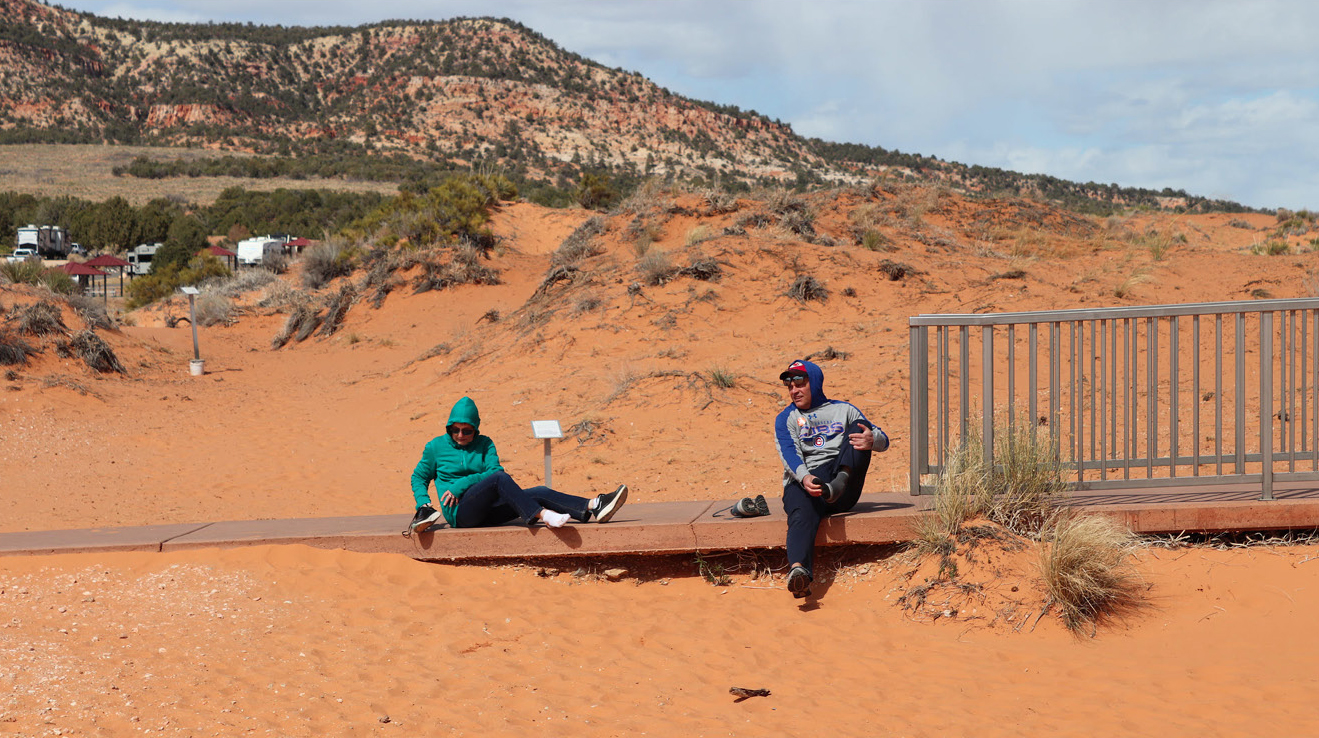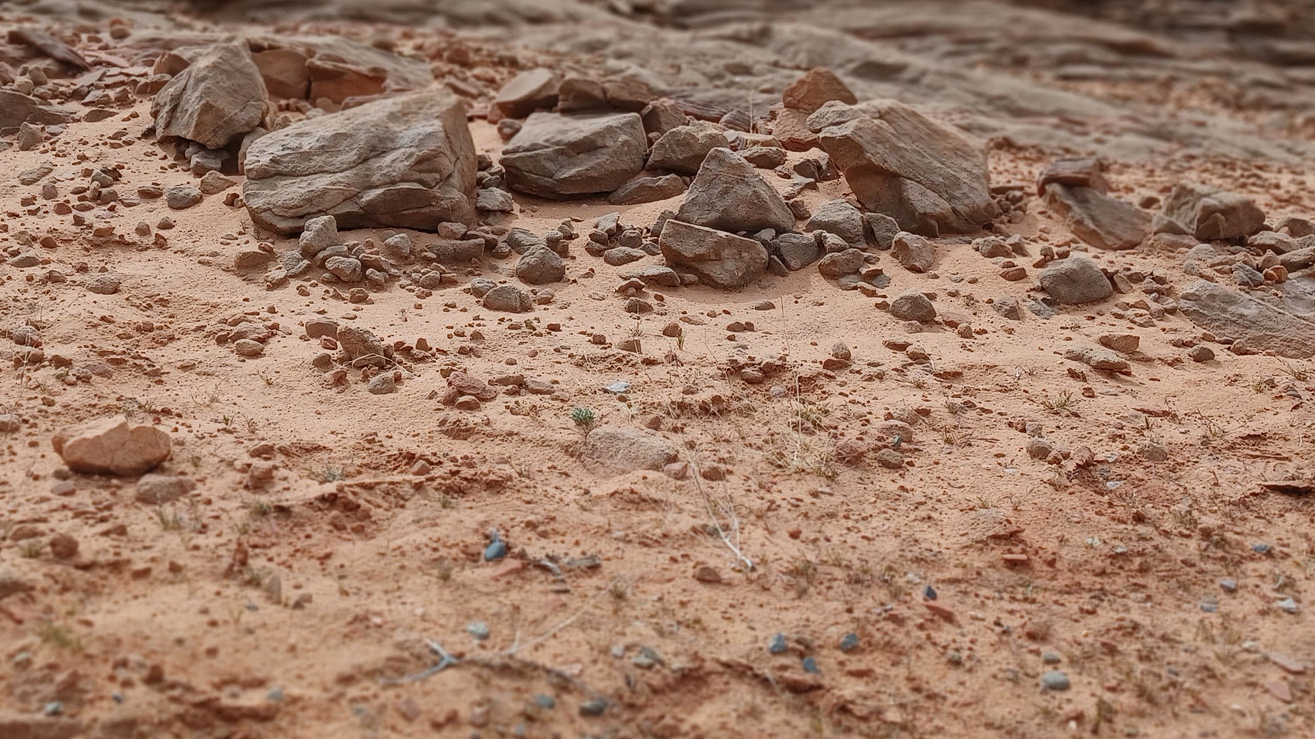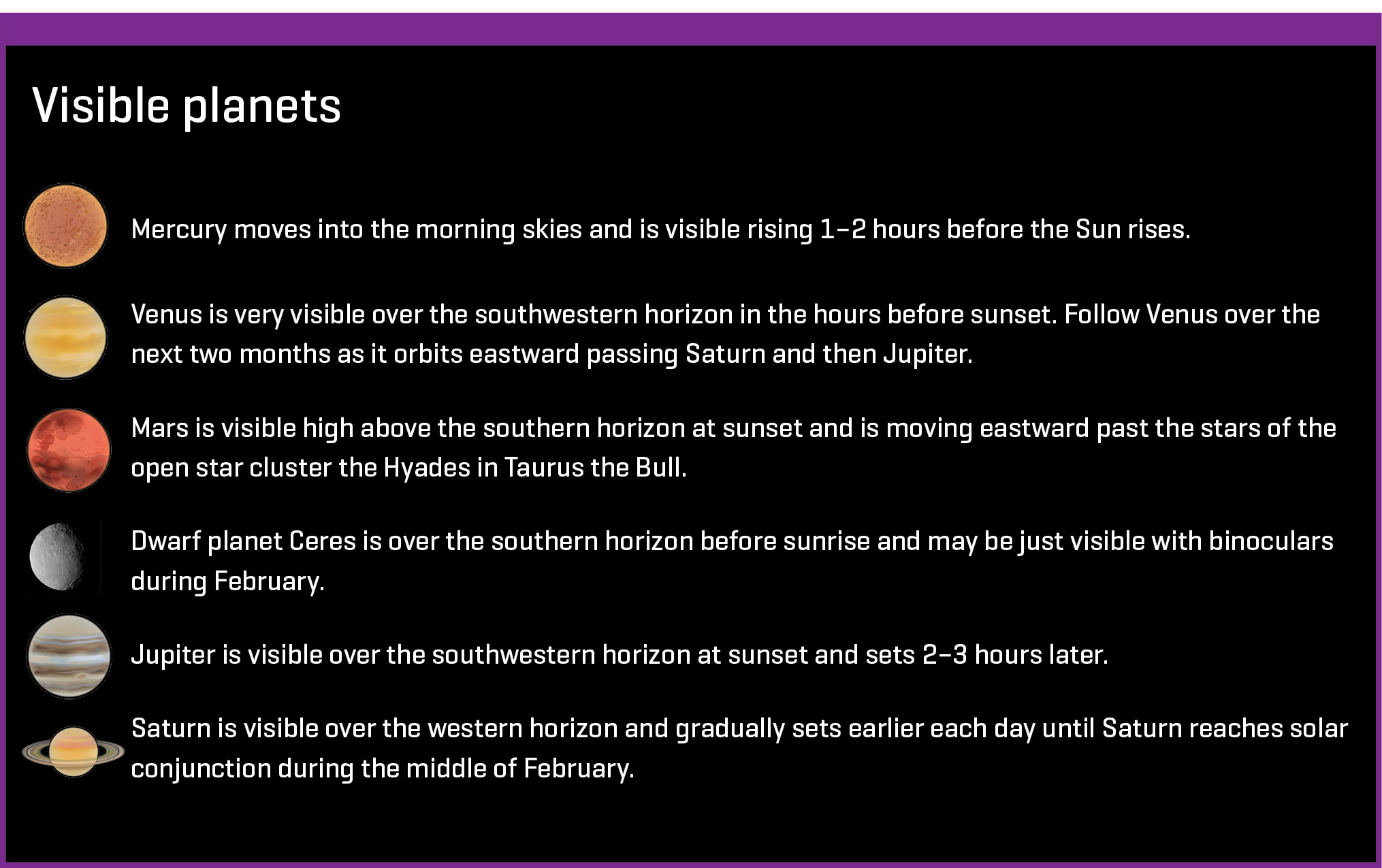scope on the skies
Sandy and Dusty Worlds
Science Scope—January/February 2023 (Volume 46, Issue 3)
By Bob Riddle
Sand is one of those things that seems to get into everything (see Figure 1), but what exactly is sand? Where does sand come from? Is sand necessary? And why is a column with a focus on space about something as Earthly as sand? Or is sand Earthly? Shifting sands as well as the loss of sand along coastal areas is of concern to communities impacted by these changes and has prompted many studies and suggestions, including those done by various governmental agencies including NASA.

Sand in our shoes!
In addition to studying sandy coastal regions, studying sand, specifically the desert regions on our planet, helps to give scientists a better understanding of the mineral composition of what sand eventually may become—dust. And while sand, as the source of dust, is important to understand, it is the influence that dust has on things like climate or our health, for example. Some dust may reflect incoming solar energy, thus cooling the atmosphere or absorbing incoming solar energy and contributing, even exacerbating, changes in the climate. We have wind and dust storms regularly on parts of the Earth, and it is the desert regions that are the Earth’s primary source of dust; according to NASA, an estimated one billion tons of dust are added to our atmosphere each year.
The impact of mineral dust on the environment has been linked to both positive and negative outcomes. In a study of the region around the Sahara Desert, based on simulation models, the effects of mineral dust in the atmosphere during different seasons showed a decrease in the number of warmer days and nights, which lowered electrical demand. These changes in turn were extrapolated to suggest a decrease in health risks related to extreme temperatures (see Online Resources).
It is important to understand how dust and sand move around the planet. But not just our planet! Sand is basically the most weathering resistant mineral fragments making up a rock eventually weathered into sand size particles. With continued weathering these small sand-size mineral particles become smaller dust size particles. This process is found on Mars and our Moon, as well as on any rocky surface solar system object subjected to meteorite impacts or aeolian processes like on Mars and Earth.
To take a giant step away from our planet, the accumulation of dust has also impacted our exploration of the surface of Mars. The solar panels on NASA’s InSight Lander are estimated to last through the end of 2022, before the solar panels start losing their effectiveness as dust covers them. The solar panels on the Ingenuity Helicopter are also being covered with dust and are starting to lose their effectiveness. Even if the dust accumulating on solar panels was not a threat to mission longevity, Mars is famous for its huge dust storms, which sometimes qualify as global events (see Online Resources).
An arid, atmosphere-less place like our Moon also has a dust problem, or more precisely the dust on our Moon was a problem during the Apollo lunar missions. Lunar dust, like the dust on Mars, is electrostatically charged, and the way it “stuck” to the spacesuits could have easily redefined the term static cling. The lunar surface is not protected by an atmosphere or magnetic field, thus allowing lunar dust to become electrostatically charged from the solar wind. It stuck to everything, and this made it challenging for the Apollo astronauts on the lunar surface to clean their spacesuits before going back into the lunar lander. Additionally, lunar dust particles are not smooth but have jagged edges unlike their smoother Earthly dust counterparts. NASA and its partners are actively redesigning spacesuits and cleaning methods planned for future missions to the Moon, like the Artemis Mission and missions beyond the Earth–lunar orbit (to Mars) (see Online Resources).
What
Dust is the stuff you wipe off a shelf, the stuff that accumulates on cars in long-term parking lots. Dust is found both indoors and outdoors, but indoor dust is not the same as outdoor dust. Indoor dust is a composite of many things that could include dead skin cells, hair and fur, plant pollens, and small fibers from paper and cloth. Outside, the dust in the air is an aerosol as it is carried into the atmosphere and moved around by winds. This dust is made up of silt-sized particles that come from the weathering of soil and other surface materials that include farming and grazing areas, mining, roads, highways, and exhaust from gas-powered vehicles and machinery. Outdoor dust, like dust on the planet Mars, may sometimes be carried by strong winds as a dust storm. While not global like on Mars, Earthly dust storms occur frequently in parts of Africa. Closer to home, the Haboob is the name given to dust storms in the desert Southwest of the United States. Dust storms are increasingly problematic in Salt Lake City. The Great Salt Lake is drying up and shrinking tremendously in size. As more of the lakebed is exposed, the silt-sized materials on its surface become airborne aerosols, creating a serious air pollution situation in the region (see Online Resources). Dust storms, regardless of their location, reduce visibility, make it difficult to breath, and are not good for a location (see Online Resources).
Size matters!
What exactly is sand? “In every outthrust headland, in every curving beach, in every grain of sand there is the story of the earth” (Rachel Carson; see Online Resources). In general, sand is described as the unconsolidated small pieces, grains, or granules of weathered and eroded rocks or minerals, but near a shoreline the sand on the beach could also include shell fragments or other organic materials (see Figure 2). Sand is also described in terms of origin, uses, and size, with the sizes ranging from 0.075 mm for fine-grained sand to 4.75 mm for coarse-grained sand. Smaller sized granules are silt, and those larger than 4.75mm are gravel. Quite often quartz, the very common and weathering-resistant mineral, is associated with sand; however, sand is a mixture of different materials, not just quartz. Even the sedimentary rock, sandstone, is not 100% quartz granules.

Weathering of rocks to sand and dust.
Much of the world’s sand is made up of the mineral quartz, which in turn is silicon dioxide (SiO2). This is not surprising because silicon (Si) makes up about 60% of the Earth’s crust. A source of the Earth’s silicon comes from the supernova of large stars, according to research conducted by Astronomer Jeonghee Rho using data from the Spitzer Space Telescope. It is interesting that all living things on our planet, like stars, are made of star stuff (see Online Resources).
Sand is an important material used in building construction. The source or origin of the type of sand used may be from natural sources such as the beds of rivers, the seafloor, the ground (pit sand), or manufactured sand. The latter comes from crushing granite into the particle-size ranges of natural sand and is used as an eco-friendly substitute for river sand. Ideally the best and most used sand should be silicon-based or silicon sand. It is estimated that approximately 50 billion tons of silicon sand is used annually in construction projects and other efforts. The silicon from silicon-based sand is an important component in electronics and is probably why part of California is known as “Silicon Valley.” This type of sand, ironically, is not the type of sand found in the desert country of Saudi Arabia, which must import sand for construction projects.
Of concern is that the world supply of silicon sand is dwindling, and equally concerning are the environmental issues resulting from the unregulated ways in which sand is extracted, processed, and made available (see Online Resources).
More recently an alternative to the standard sources for sand comes from a process in which glass is recycled into grains of sand. One such company, Glass Half-Full in Louisiana, recycles glass into sand that is used for filling sandbags or as landfill to help the reclamation or restoration of coastal areas (see Online Resources).
Dust from space
The annual Quadrantid meteor shower occurs during the month of January, and depending on the location of our Moon, the Quadrantids can often reach a ZHR (Zenithal hourly rate) of more than 100 per hour. The radiant for the Quadrantids rises a couple of hours before midnight and is located between the handle of the Big Dipper and the constellation of Draco the Dragon. On January 3rd, the peak night, the near full Moon will be setting around 3 or 4 am, CST, and the Quadrantid radiant will be above the northeastern horizon. Solar system objects like the rocks and ice from meteors and comets that enter our atmosphere break apart from the forces encountered during atmosphere entry. It is more than likely that over the years some of what remains reaches the surface of Earth, perhaps contributing to our dusty planet!
Ergs in space
It is probably safe to say that sand is ubiquitous, regardless of the world one is referring to. Where we find rocks and weathering there will be sand. While mineral composition and origin may vary, one thing sand is known for is the ability to form sand dunes. How and where sand dunes form is a matter of the type of sand grains and winds. Very large dune fields with no vegetation are referred to as ergs, from the Arabic word Arq, meaning “dune field.” There are a few worlds we know of so far where sand dunes form and collect into fields or ergs—in addition to Earth, there is Mars, Venus, Saturn’s Moon Titan, Pluto, and possibly Jupiter’s volcanic moon Io. On our planet, most people are familiar with ergs but know them by their common name, such as the Sahara Desert. The dunes within an erg, sometimes called sand seas, vary in their appearance and location based on local conditions.
Winds constantly change direction and velocity, thus keeping sand in constant motion. Moving sand often piles up into distinctive dune shapes and sizes, and over time it could organize into a large dune field or an erg. Some dune fields or ergs on Mars form from sand dunes within crater walls and are shaped by how surface winds move relative to the crater size and shape (see Figure 3).

Martian sand dunes.

EMIT Imaging Spectrometer Instrument Approach graphic.
For students
1. Start a dust sampling project by wrapping double-sided tape around some microscope slides and place the slides in different places inside and outside. Leave for several days and then use a hand lens to examine the particles that have landed and stuck to the tape.
2. What is it about the sands in the deserts of Saudi Arabia that make it unsuitable for making concrete? (The grains are too round, leaving too many gaps or empty spaces between each grain.)
3. Learn more about environmentalist Rachel Carson and her idea that every grain of sand has a story.
4. What is the relationship between Hawaii’s white sandy beaches and the parrotfish?
EMIT
Launched during July of this past year, NASA’s EMIT (Earth Surface Mineral Dust Source Investigation) instrument package was sent to the International Space Station (ISS) for installation aboard a SpaceX rocket (see Online Resources). The instrument will be attached to the outside of the ISS on the ECLI 1 (ExPRESS Logistics Carrier 1), one of four locations or hubs on the ISS exterior where research packages may be attached. The EMIT instrument is the only one of its kind and is essentially a spectrometer that will be used to analyze the spectrum of reflected sunlight coming from desert sands (see Figure 4). Because mineral dust has such an impact on us and our planet, it is important to understand the mineral composition of the sands creating the dust and how the mineral dust moves through the atmosphere—hence the importance of the EMIT mission.


Online Resources
5 Things to Know About NASA’s New Mineral Dust Detector—https://go.nasa.gov/3VVF9OY
Dust Changes Seasonal Temperatures—https://bit.ly/3FhCQPv
Dust Storms and Haboobs—https://bit.ly/3BnKUwN
EMIT Instrument—https://go.nasa.gov/3FA91uL
Exploding Stars Make Key Ingredient in Sand, Glass—https://go.nasa.gov/3uDhaYU
Glass Half-Full—glasshalffullnola.org/home
InSight Power Levels Diminish—https://go.nasa.gov/3Y6kWaN
NASA Orbiter Catches Mars Sand Dunes in Motion—https://go.nasa.gov/3Fdaxl2
New Moon Duster—https://go.nasa.gov/3uGawB6
Rachel Carson—https://bit.ly/3iP7IiH
Spacesuits for Artemis: Moon Dust [video]—https://bit.ly/3W7ts7P
Spacesuit Basics—https://go.nasa.gov/3iPRs0P
Spacesuit—Next Generation—https://go.nasa.gov/3hfcdTi
Suit Up—www.nasa.gov/suitup
Some Sand Dunes in America—https://bit.ly/3h8JNKG
Sand and Sustainability Report from the UN—https://bit.ly/3iP8FaL
The Cause for Martian Dust Storms—https://bit.ly/3PbeFXe
Will the Great Salt Lake go up in dust?—https://bit.ly/3iO8X1A
What is a Dust Storm?—scijinks.gov/dust-storm/
Bob Riddle (bob-riddle@currentsky.com) is a science educator in Lee’s Summit, Missouri. Visit his astronomy website at https://currentsky.com.
Astronomy Earth & Space Science Middle School


